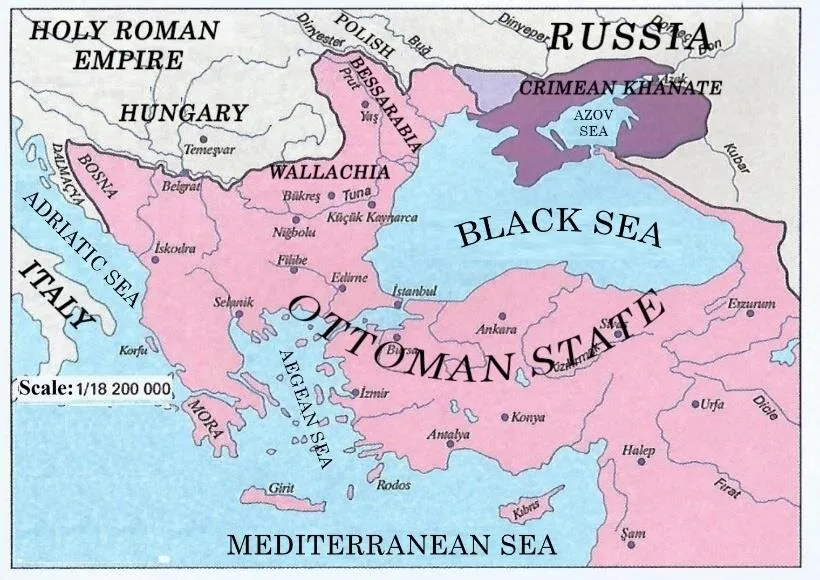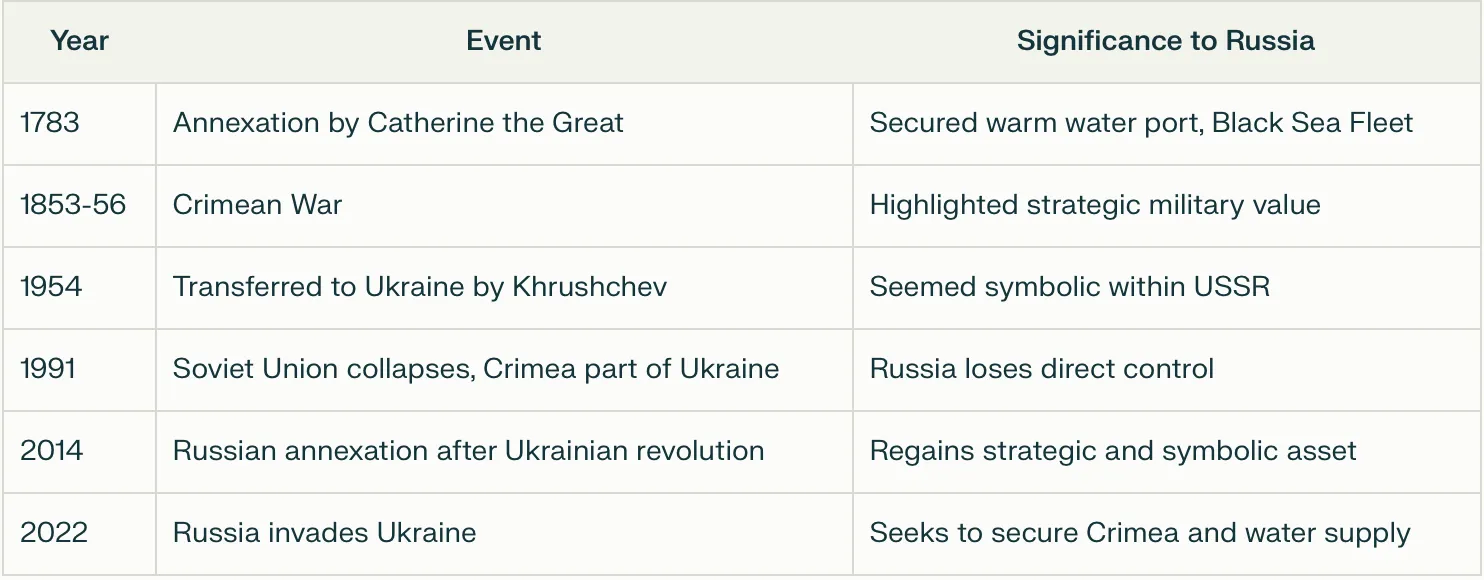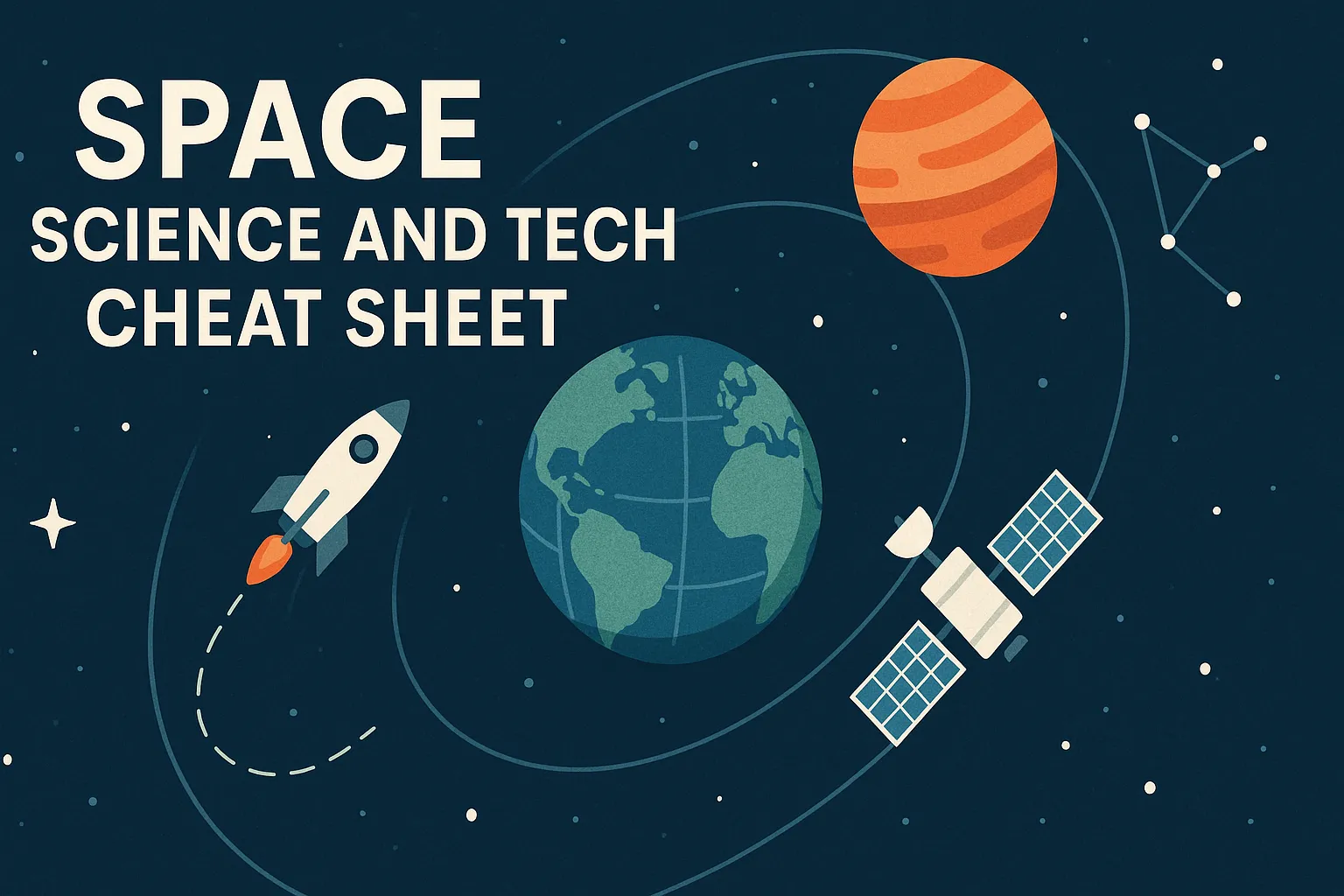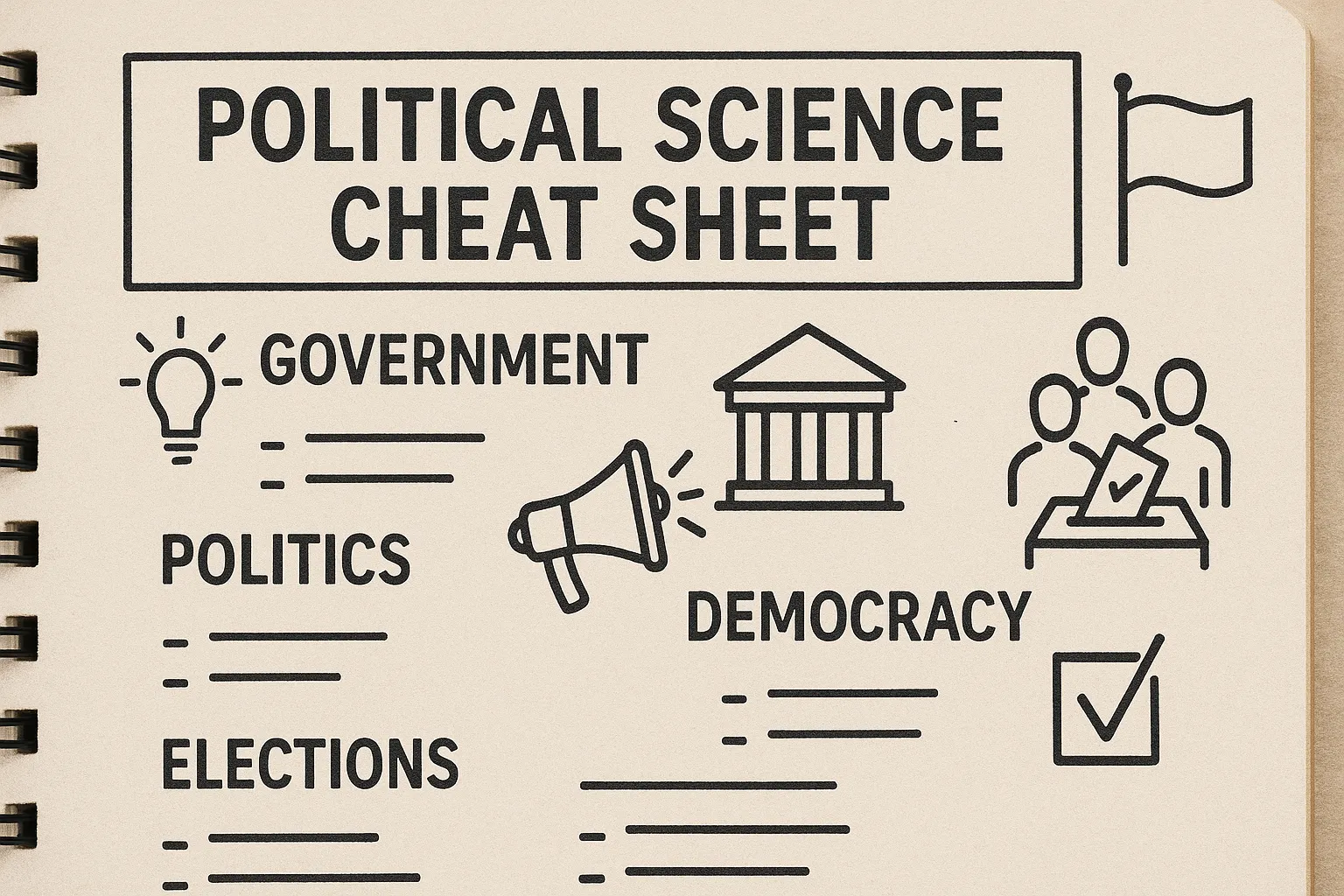UPSC
Cheat Sheets
The Ultimate Cheat Sheet: Importance of Crimea in Russian Geopolitics UPSC Prelims 2025
Last Updated
27th April, 2025
Date Published
26th April, 2025
Share This Post With Someone

Want To Print The Cheat Sheet & Prepare On The Go?
Crimea's Strategic Significance to Russia: A Historical and Geopolitical Analysis
- Crimea's importance to Russia is a complex tapestry woven through centuries of history, geography, and geopolitical strategy.
- This report traces the peninsula’s evolving role in Russian foreign policy, from imperial expansion to modern-day conflicts, to provide students with a clear, chronological understanding of why Crimea remains a cornerstone of Russia’s national interests.
Early History and Geographic Foundations
Ancient Crossroads of Civilizations
- Crimea’s strategic value dates to antiquity. Positioned at the intersection of the Black Sea and the Eurasian steppe, it served as a hub for Greek colonies, Gothic settlements, and the Crimean Khanate, a Turkic vassal state of the Ottoman Empire.
- Its coastal access facilitated trade routes linking Europe, Asia, and the Middle East, establishing its role as a contested territory long before Russian dominance.
The Russian Empire’s Quest for Warm Water Ports
- In 1783, Empress Catherine the Great annexed Crimea, marking Russia’s first major acquisition of a warm-water port at Sevastopol.
- This move addressed a critical weakness: most Russian ports froze in winter, limiting naval operations.
- Sevastopol’s deep-water harbor allowed year-round maritime access, enabling Russia to project power into the Mediterranean and beyond.
Imperial and Soviet Eras: Cementing Control

The Crimean War (1853–1856)
- The peninsula’s strategic importance was underscored during the Crimean War, where Russia clashed with an Anglo-French-Ottoman coalition over influence in the Black Sea.
- Though Russia lost, retaining Crimea solidified Sevastopol’s role as the home of the Black Sea Fleet.
- Foreign Minister Sergey Sazonov later emphasized that control over the Turkish Straits (Bosphorus and Dardanelles) would determine “the economic development of South Russia”.
Soviet Transfer to Ukraine (1954)
- In a controversial move, Soviet leader Nikita Khrushchev transferred Crimea from Russia to Ukraine in 1954, a symbolic gesture within the USSR.
- Sevastopol’s naval base remained under Russian control, foreshadowing future tensions.
- By 1991, when the USSR dissolved, Crimea’s majority Russian-speaking population and strategic assets created friction between newly independent Ukraine and Russia.
Post-Soviet Tensions and the Sevastopol Dilemma
The Kharkiv Pact (1997–2010)
- Ukraine’s independence forced Russia to negotiate access to Sevastopol.
- The 1997 Kharkiv Pact allowed Russia to lease the port until 2017, later extended to 2042 under pro-Russian President Viktor Yanukovych.
- This arrangement highlighted Crimea’s irreplaceability: alternative Russian ports like Novorossiysk were shallower and less suitable for large warships.
NATO Expansion and Russian Insecurity
- Russia viewed Ukraine’s post-2014 pro-Western government as an existential threat.
- Potential NATO membership for Ukraine-mirroring Romania and Bulgaria-would encircle Russia in the Black Sea, transforming it from a “Soviet lake” to a NATO-dominated zone.
- Control of Crimea became vital to counterbalance this perceived vulnerability.
The 2014 Annexation: Strategic and Resource Imperatives
Securing Sevastopol and Preempting NATO
- The ouster of Yanukovych during Ukraine’s Maidan Revolution triggered Russia’s annexation. With Kyiv’s new government likely to revoke Sevastopol’s lease, Russia moved to secure the port permanently.
- A hastily organized referendum-rejected internationally formalised Crimea’s incorporation into Russia, ensuring uninterrupted naval access.
The Water Crisis and the North Crimean Canal
- Crimea’s arid climate relies on the North Crimean Canal, which channels water from Ukraine’s Dnieper River.
- After annexation, Ukraine blocked the canal, cutting 85% of the peninsula’s freshwater supply.
- This crisis underscored Crimea’s fragility: in 2022, Russia prioritized capturing the canal’s Ukrainian headwaters during its invasion, highlighting resource security as a core motive.
Crimea in the 2022 Invasion and Beyond
Land Corridors and Escalating Conflict
- Russia’s 2022 invasion aimed to secure a land bridge to Crimea and restore water flow via the North Crimean Canal.
- Control of Kherson Oblast became critical, as it houses the canal’s infrastructure.
- Despite partial occupation, Ukraine’s resilience has left Crimea’s water supply precarious, illustrating how geographic dependencies shape modern warfare.
Geopolitical Repercussions and International Stances
- Western nations uniformly reject Crimea’s annexation, fearing precedents for territorial aggression (e.g., China’s claims over Taiwan).
- Proposals like Donald Trump’s 2024 suggestion to recognize Russian control reveal ongoing debates about realpolitik versus international law.

Conclusion: Geography as Destiny
Crimea’s significance to Russia hinges on immutable geographic realities:
- Naval Dominance: Sevastopol remains the linchpin of Russia’s Black Sea Fleet, enabling Mediterranean access.
- Resource Security: Control over freshwater and energy routes dictates military priorities.
- Historical Identity: Crimea symbolises Russia’s imperial legacy and cultural ties.
- Crimea’s story exemplifies how geography shapes history. From Catherine the Great’s ambitions to Putin’s invasions, the peninsula’s ports and pipelines have dictated conflicts, proving that even in the modern era, location remains a sovereign’s most asset.
- This analysis synthesizes Crimea’s past and present to demonstrate why a small peninsula continues to shape global geopolitics. By tracing its role across centuries, students gain insights into the interplay of geography, strategy, and power-a timeless lesson in international relations.

UPSC
Cheat Sheets


UPSC
Cheat Sheets